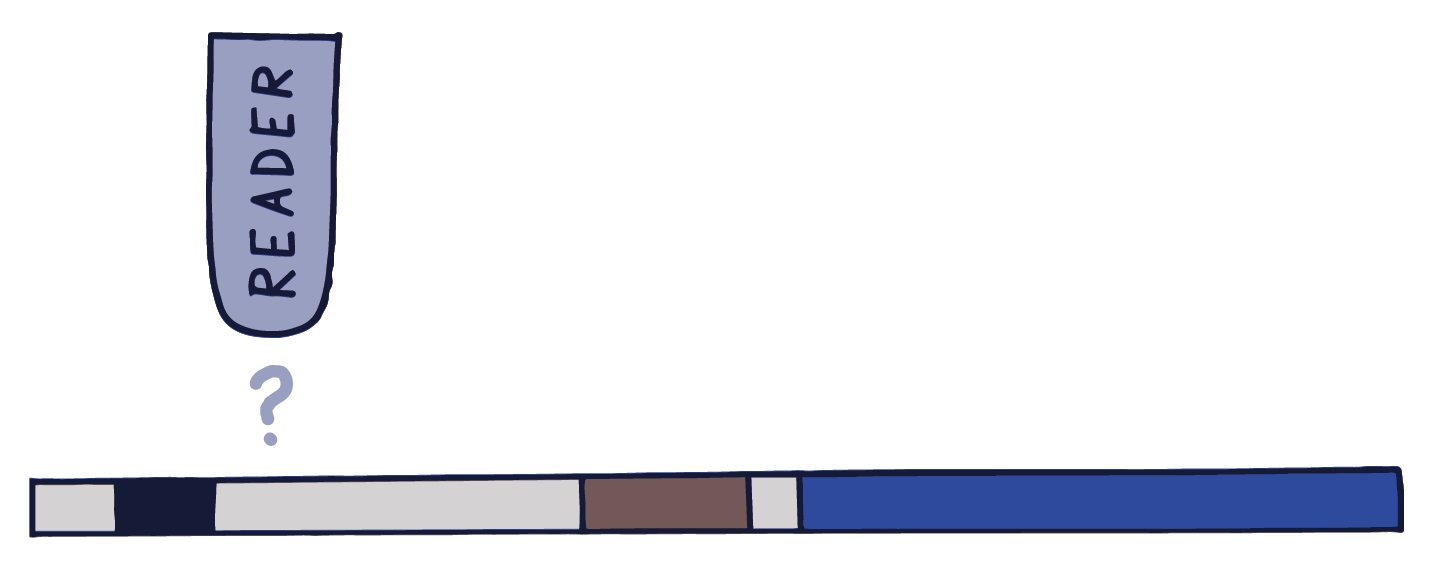The Universe Explained with a Cookie
My new book The Universe Explained with a Cookie will be available in just a few weeks! I am incredibly proud of it, and hope that it makes some deep scientific concepts more accessible to everyone.
While not directly game-related, the central conceit of the book builds on what I’ve learned doing GameTek for fifteen years now. GameTek was built on using games that people were familiar with as a launching point for topics in math, science, and psychology. This book uses cookie ingredients, baking steps, and cookie-adjacent activities to do the same.
I am delighted to present the entirety of Chapter Eight to give you an idea of what you will find between the covers. I hope that you will indulge me as I sneak in a non-gaming column in this GameTek - although in this chapter I do play a type of game.
The Universe Explained with a Cookie can be pre-ordered now from just about everywhere and will be hitting retail on April 30th!
While the instructions are one key part of the egg, another is the machinery to read and perform those instructions. It seems almost miraculous that a baby can grow from a single cell and that all the patterns that form our body are put into the right spots.
Fortunately, over the last few decades, we’ve learned a tremendous amount about how these patterns are formed. It’s best explained through the use of . . . a cookie.
I want to create a cookie with a nice design on it, done in frosting. But I’m super lazy, and I don’t want to put the frosting on myself. Instead, I’ve invented a tiny little machine that can put frosting right in its area. I’ve got a blank cookie, and I’ve scattered thousands of these little frosting machines across the face of the cookie, like pixels on a television screen. I can give each of these little dot machines instructions on when to make frosting and when not to.
But because I’m lazy, every single machine has to have the same instructions. I only want to write one set of instructions, not thousands!
How can I set this up to make an intricate pattern?
Before we solve this problem, I will tip my hand and confirm what you probably already suspect. This self-frosting-cookie problem is analogous to how an embryo develops. Embryos start out as one cell, but quickly they duplicate into a mass of thousands of cells. Somehow the cells need to decide if they are going to make a bone or a muscle or skin or an eye. But every cell has the same instructions—they all share the same DNA.
Looking at the self-frosting cookie will help explain how this works. We’ll then talk about some of the differences between our simple cookie model and the real world.
We are all self-frosting cookies.
Our Self-Frosting Tool Kit
Here is our blank cookie:
To create our designs, we need a few features.
First, we need some type of signal that is strong on one side of the cookie and gets weaker as you move across. Something like this:
It could be a chemical, or an electric or magnetic force, or light, or anything really. But whatever it is, our little frosting machines have sensors that can tell the strength of the signal. Then our machines need to have instructions as to whether they are “on” or “off,” based on whether the signal is above or below a certain value.
For example, let’s say our signal goes from zero to one hundred. We could have a rule for the machine to turn on when it sees seventy or higher. Then the machines in the black area will turn on.
If the rule is turn on when it’s forty or higher, it will look like this:
We’re getting there—these patterns look like we dipped our cookie into frosting.
But we can probably do better.
Wave It Up
The next piece of our tool kit is another type of signal—and the only other one we will need. This one is in the form of a wave. It looks like this:
This wave signal, and the earlier one that goes evenly from high to low, can both be generated by a wide variety of natural processes. So they are good to use as fundamentals for our system.
We can use our “on/off” switch with the wave signal. This gives us stripes! Now we’re getting somewhere! This looks like a proper frosted cookie.
We don’t have to generate the signals from left to right. We can also create them from top to bottom. That lets us do something like this:
One final piece for our tool kit. We know how to make blocks of color and stripes. We used them to turn our switches on, but what if we could use them to turn a switch that was on back to off?
In this diagram, I’ve got two patterns. The black one turns machines on, but the brown pattern turns machines off. The “off” patterns are generated using the same rules—so blocks and stripes.
Combining those two leads to the third diagram—a stripe that is off center.
You can see that by varying how big the different blocks are, we can put a stripe anywhere with any thickness.
And now, with our full tool kit, we can do lots of fun stuff! We can take a horizontal block and subtract a vertical block and make an area in the corner:
Or we can take vertical stripes and subtract out horizontal stripes to get a checkerboard pattern:
Or we can start with stripes but subtract out three separate blocks to just leave us with three small patches:
Using these tools, you can create a dizzying array of patterns, while still following the restrictions set by our lazy cookie decorator. These procedures are essentially the tools that an embryo uses when it is developing.
The “signals” in this case are protein concentrations. They are high near one end of the embryo and drop off as you move across. It is easy to make this by just having a “pump” at one end of the embryo that puts out the protein. Then it is high near the pump and naturally drops off as you move farther away.
Very early in its development, the embryo develops two “axes”—an east-west gradient, and a north-south gradient. This enables each cell to, in essence, figure out its coordinates in the embryo, much like using latitude and longitude on a globe.
These signal proteins activate genetic switches on the DNA, which are similar to the switches in our cookie-frosting machines. How do these switches work?
Earlier we talked about how DNA gives the sequences of amino acids to make proteins. This is only partially true. Only 1 percent of DNA actually encodes proteins. For a long time, we used to think the other 99 percent was “junk” DNA that didn’t do anything. Maybe it was just a leftover from evolution. However, in the last few decades, we have come to realize that this so-called “junk” is anything but. Much of it is for these genetic switches that either start or stop production of certain proteins.
Signal proteins look to latch onto a specific sequence of DNA. When they find it, they clamp on. Sometimes, depending on the shape of the protein, this attracts attention from the “machine” that reads the DNA (called RNA polymerase).
These are called promoters. But sometimes the signal protein will instead prevent the RNA polymerase from attaching to the DNA and reading it. These are called repressors.
Through this combination of promoters and repressors, cells in some areas will activate certain sections of DNA, and others will not. This is completely analogous to how the cookie-decorating patterns are generated.
For example, let’s look again at this combination from earlier:
Remember, we said the final area (with the blue) happens by starting with the black area and subtracting the brown area. What’s happening on the DNA to make this happen?
Here’s a gene that when it’s read, it produces BLUE:
There’s no helper protein here, so the reader doesn’t produce blue that much, if at all. It needs help to clamp onto the DNA properly.
Let’s say that a cell that is in the BLACK part of the embryo shown on the last page has the machinery turned on to produce a protein called BLACK—and it floats around the cell. When it floats by the black section of the DNA strand above, it wants to latch on, since it matches that part.
When BLACK latches on, that creates a friendly ramp for READER to start at. It happily slides down the DNA and produces the BLUE protein.
But if the cell is also in the brown portion, another part of the DNA produces BROWN.
BROWN latches onto the BROWN section. It is spiky and generally unfriendly, and the READER is stopped when it hits it. BLUE is no longer produced.
The combination of these factors results in BLUE being produced only in cells that are producing BLACK but aren’t producing BROWN. BLACK is a promotor, and BROWN is a repressor.
One thing we haven’t talked about is what BLUE does. That’s the neat part—BLUE could perform a function in the cell, like moving sugar around, but BLUE could also be a signal—either as a promoter or a repressor for other proteins, or even as a promoter for some or a repressor for others.
In this way, the entire organism is built up.
This example from earlier is actually similar to a real pattern that you see during the development of many animals.
Those purple squares are where limbs will grow. The “purple” in this case is a special protein called “distal-less,” or Dlx for short. It got that name because when researchers interrupted it, leg development stopped.
When Dlx is present in an area, a limb will grow out of it. It’s a switch that turns on the entire “make a leg” program in cells in that area. Similarly, a protein called PAX6 causes eyes to be formed. Wherever PAX6 signals, the eye “program” is run. Researchers have done experiments on fruit flies where, for example, they put PAX6 on the embryo where the wings develop, and sure enough there was an eye on the wing.
As it became easier and easier to sequence DNA, researchers made a startling discovery about genes like Dlx and PAX6. They are in all animals, are almost exactly the same proteins, and do almost exactly the same thing. If you put a mouse PAX6 into a fly, it still develops an eye. A fly eye, in case you were wondering.
This means that the concept of an “eye” must be incredibly ancient, and the meaning of “eye” has been preserved through just about every animal species. Evolutionists assumed that eyes as different as the fly’s compound eye and our eye evolved separately or diverged so long ago that the mechanisms for their construction would be radically different by now. But they’re not. That master “make an eye here” switch has been preserved for hundreds of millions of years. Even simple worms that just have some light-sensitive patches use PAX6 to trigger their formation. And going back to limbs, snakes contain the Dlx signal that produces them. But it is never produced in snakes because of repressors.
This modular structure to animal growth—put legs here in one creature, there in another, eyes over here, make the midsection longer or shorter—gives evolution tremendous power in developing new body forms. It makes building an animal akin to a set of Lego bricks that snap together in an endless variety of ways. But they always use the same core genetic tool kit.
We are all, in essence, cookies with incredibly complex decorations.
The Universe Explained with a Cookie will be available on April 30th 2024




















